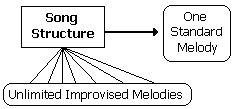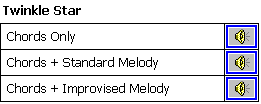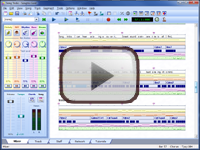(8.1) Understanding Improvisation
If you are a beginning musician, you may find the concept of improvisation surprising. Shouldn't everyone just play a piece of music the way it is supposed to be played?
Well, yes and no. There is very little scope for improvisation in classical music, where every note is documented in the score and must be played exactly as written.
However, improvisation is very common in other music styles such as rock, jazz and blues. You have probably heard players improvising in many of your favourite songs and never realised it, because it fits so well.
While most pieces of music have a particular tune firmly associated with them, this is only one of the unlimited melodic possibilities which could be used.

Improvisation is a whole new perspective on music. Instead of faithfully reproducing an existing work (the classical approach), improvisation lets you start with a general theme, and then sketch out your own creation on top of it.
When improvising, you are involved in an open-ended creative process. You are likely to find fresh ideas for expressing the music which may not have arisen if you rehearsed your part beforehand.
For example, let's explore an old favourite, Twinkle Twinkle Little Star. The first sound below is the chords (structure) of this song only, while the second includes the standard melody as well.
The third sound, however, plays the chords together with an improvised alternative melody. A different improvised melody is created each time you play it, try it a few times.

The improvised melodies are randomly generated, so don't expect a beautiful tune each time. A human player with a real sense of music would do a much better job.
The point is that the notes used are essentially compatible with the chords, painting a different melodic picture against the same background.
How are these notes chosen? The choice of scale provides the melodic structure for improvisation, giving you a palette of notes that you can use to paint melodies with.
An effective way to test the suitability of a scale is simply to play the notes in sequence over the top of the chord progression. Listen to the sound of our scale below over the same chords.

You should hear that the scale fits well (even if the random tunes don't always seem to have the notes arranged in the best order).
By contrast, let's see the effect of improvising over these chords without this structure (in other words, using the unrestricted set of notes from the chromatic scale).

As you can hear, the results of not using a scale are pretty dubious. Occasionally the notes seem to fit, but there are so many wrong notes that the overall effect is thoroughly unimpressive.
Using a bad choice of scale is often even worse. This one below is about as bad as you can get - not a single note is appropriate for the key of the song. You will surely agree that it sounds pretty terrible.

The big question of course is, how do you decide which is the right scale?













